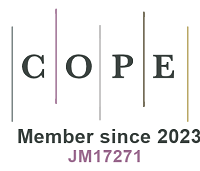REFERENCES
1. Jéquier E, Constant F. Water as an essential nutrient: the physiological basis of hydration. Eur J Clin Nutr. 2010;64:115-23.
4. UN Environment. Global chemicals outlook II from legacies to innovative solutions: implementing the 2030 agenda for sustainable development. United Nations Environment Programme; 2019.
5. Kümmerer K, Dionysiou DD, Olsson O, Fatta-Kassinos D. A path to clean water. Science. 2018;361:222-4.
6. Yang H, Wright JA, Gundry SW. Water accessibility: boost water safety in rural China. Nature. 2012;484:318.
7. Calabrese EJ. Ethical failings: the problematic history of cancer risk assessment. Environ Res. 2021;193:110582.
8. Calabrese EJ. LNT and cancer risk assessment: Its flawed foundations part 2: how unsound LNT science became accepted. Environ Res. 2021;197:111041.
9. Calabrese EJ. The linear No-Threshold (LNT) dose response model: a comprehensive assessment of its historical and scientific foundations. Chem Biol Interact. 2019;301:6-25.
10. Calabrese EJ, Priest ND, Kozumbo WJ. Thresholds for carcinogens. Chem Biol Interact. 2021;341:109464.
11. Tsatsakis A. Toxicological risk assessment and multi-system health impacts from exposure. Elsevier; 2021.
12. Tsatsakis AM, Vassilopoulou L, Kovatsi L, et al. The dose response principle from philosophy to modern toxicology: the impact of ancient philosophy and medicine in modern toxicology science. Toxicol Rep. 2018;5:1107-13.
13. Agathokleous E, Calabrese EJ. Hormesis: the dose response for the 21st century: the future has arrived. Toxicology. 2019;425:152249.
14. Leak RK, Calabrese EJ, Kozumbo WJ, et al. Enhancing and extending biological performance and resilience. Dose Response. 2018;16:1559325818784501.
15. Erofeeva EA. Environmental hormesis of non-specific and specific adaptive mechanisms in plants. Sci Total Environ. 2022;804:150059.
17. Carvalho MEA, Castro PRC, Azevedo RA. Hormesis in plants under Cd exposure: from toxic to beneficial element? J Hazard Mater. 2020;384:121434.
18. Shahid M, Niazi NK, Rinklebe J, Bundschuh J, Dumat C, Pinelli E. Trace elements-induced phytohormesis: a critical review and mechanistic interpretation. Crit Rev Environ Sci Technol. 2020;50:1984-2015.
19. Agathokleous E, Calabrese EJ. A global environmental health perspective and optimisation of stress. Sci Total Environ. 2020;704:135263.
20. Agathokleous E, Calabrese EJ. Hormesis can enhance agricultural sustainability in a changing world. Glob Food Secur. 2019;20:150-5.
21. Costantini D, Metcalfe NB, Monaghan P. Ecological processes in a hormetic framework. Ecol Lett. 2010;13:1435-47.
22. Costantini D, Monaghan P, Metcalfe NB. Prior hormetic priming is costly under environmental mismatch. Biol Lett. 2014;10:20131010.
23. Costantini D, Borremans B. The linear no-threshold model is less realistic than threshold or hormesis-based models: an evolutionary perspective. Chem Biol Interact. 2019;301:26-33.
25. Calabrese EJ, Kozumbo WJ. The hormetic dose-response mechanism: Nrf2 activation. Pharmacol Res. 2021;167:105526.
26. Kozumbo WJ, Calabrese EJ. Two decades (1998-2018) of research Progress on Hormesis: advancing biological understanding and enabling novel applications. J Cell Commun Signal. 2019;13:273-5.
27. Calabrese EJ. Hormesis commonly observed in the assessment of aneuploidy in yeast. Environ Pollut. 2017;225:713-28.
28. Cedergreen N, Streibig JC, Kudsk P, Mathiassen SK, Duke SO. The occurrence of hormesis in plants and algae. Dose Response. 2006;5:150-62.
29. Moore MN, Shaw JP, Pascoe C, Beesley A, Viarengo A, Lowe DM. Anti-oxidative hormetic effects of cellular autophagy induced by nutrient deprivation in a molluscan animal model. Mar Environ Res. 2020;156:104903.
30. Laughlin RB Jr, Ng J, Guard HE. Hormesis: a response to low environmental concentrations of petroleum hydrocarbons. Science. 1981;211:705-7.
31. Stebbing ARD. The effects of low metal levels on a clonal hydroid. J Mar Biol Ass. 1976;56:977-94.
32. Stebbing A. Hormesis—stimulation of colony growth in Campanularia flexuosa (hydrozoa) by copper, cadmium and other toxicants. Aqua Toxicol. 1981;1:227-38.
33. Stebbing A. Hormesis — the stimulation of growth by low levels of inhibitors. Sci Total Environ. 1982;22:213-34.
34. Agathokleous E, Feng Z, Iavicoli I, Calabrese EJ. The two faces of nanomaterials: a quantification of hormesis in algae and plants. Environ Int. 2019;131:105044.
35. Agathokleous E, Iavicoli I, Barceló D, Calabrese EJ. Micro/nanoplastics effects on organisms: a review focusing on 'dose'. J Hazard Mater. 2021;417:126084.
36. Sun T, Zhan J, Li F, Ji C, Wu H. Evidence-based meta-analysis of the genotoxicity induced by microplastics in aquatic organisms at environmentally relevant concentrations. Sci Total Environ. 2021;783:147076.
37. Sun T, Zhan J, Li F, Ji C, Wu H. Effect of microplastics on aquatic biota: a hormetic perspective. Environ Pollut. 2021;285:117206.
38. Li J, Li W, Min Z, Zheng Q, Han J, Li P. Physiological, biochemical and transcription effects of roxithromycin before and after phototransformation in Chlorella pyrenoidosa. Aquat Toxicol. 2021;238:105911.
39. Mao Y, Yu Y, Ma Z, et al. Azithromycin induces dual effects on microalgae: Roles of photosynthetic damage and oxidative stress. Ecotoxicol Environ Saf. 2021;222:112496.
40. Pikula K, Kirichenko K, Vakhniuk I, et al. Aquatic toxicity of particulate matter emitted by five electroplating processes in two marine microalgae species. Toxicol Rep. 2021;8:880-7.
41. Cantalupi A, Maraschi F, Pretali L, et al. Glucocorticoids in freshwaters: degradation by solar light and environmental toxicity of the photoproducts. Int J Environ Res Public Health. 2020;17:8717.
42. Zhang M, Steinman AD, Xue Q, Zhao Y, Xu Y, Xie L. Effects of erythromycin and sulfamethoxazole on Microcystis aeruginosa: Cytotoxic endpoints, production and release of microcystin-LR. J Hazard Mater. 2020;399:123021.
43. Qu H, Ma R, Barrett H, et al. How microplastics affect chiral illicit drug methamphetamine in aquatic food chain? From green alga (Chlorella pyrenoidosa) to freshwater snail (Cipangopaludian cathayensis). Environ Int. 2020;136:105480.
44. Song C, Liu Z, Wang C, Li S, Kitamura Y. Different interaction performance between microplastics and microalgae: the bio-elimination potential of Chlorella sp. L38 and Phaeodactylum tricornutum MASCC-0025. Sci Total Environ. 2020;723:138146.
45. Guo J, Ma Z, Peng J, et al. Transcriptomic analysis of Raphidocelis subcapitata exposed to erythromycin: the role of DNA replication in hormesis and growth inhibition. J Hazard Mater. 2021;402:123512.
46. Cai H, Liang J, Ning XA, Lai X, Li Y. Algal toxicity induced by effluents from textile-dyeing wastewater treatment plants. J Environ Sci (China). 2020;91:199-208.
47. Chae Y, Kim D, An YJ. Effects of micro-sized polyethylene spheres on the marine microalga Dunaliella salina: focusing on the algal cell to plastic particle size ratio. Aquat Toxicol. 2019;216:105296.
48. Chamsi O, Pinelli E, Faucon B, et al. Effects of herbicide mixtures on freshwater microalgae with the potential effect of a safener. Ann Limnol - Int J Lim. 2019;55:3.
49. Zhang Y, Calabrese EJ, Zhang J, Gao D, Qin M, Lin Z. A trigger mechanism of herbicides to phytoplankton blooms: from the standpoint of hormesis involving cytochrome b559, reactive oxygen species and nitric oxide. Water Res. 2020;173:115584.
50. Guo X, Liu M, Zhong H, et al. Potential of Myriophyllum aquaticum for phytoremediation of water contaminated with tetracycline antibiotics and copper. J Environ Manage. 2020;270:110867.
51. Guo X, Zhu L, Zhong H, Li P, Zhang C, Wei D. Response of antibiotic and heavy metal resistance genes to tetracyclines and copper in substrate-free hydroponic microcosms with Myriophyllum aquaticum. J Hazard Mater. 2021;413:125444.
52. González-Doncel M, Fernández Torija C, Pablos MV, García Hortigüela P, López Arévalo M, Beltrán EM. The role of PFOS on triclosan toxicity to two model freshwater organisms. Environ Pollut. 2020;263:114604.
53. Li Y, Liu Z, Li M, et al. Effects of nanoplastics on antioxidant and immune enzyme activities and related gene expression in juvenile Macrobrachium nipponense. J Hazard Mater. 2020;398:122990.
54. Liu Y, Guo R, Tang S, et al. Single and mixture toxicities of BDE-47, 6-OH-BDE-47 and 6-MeO-BDE-47 on the feeding activity of Daphnia magna: From behavior assessment to neurotoxicity. Chemosphere. 2018;195:542-50.
55. Cesar-Ribeiro C. Chemical contents of disposed light sticks affect the physiology of rocky crab Pachygrapsus transversus and gray shrimps Litopennaeus vanammei. Bull Environ Contam Toxicol. 2021;107:370-7.
56. Bordin ER, Cesar Munhoz R, Panicio PP, Freitas AM. Transgenerational effects of environmentally relevant concentrations of atrazine and glyphosate herbicides, isolated and in mixture, to freshwater microcrustacean Daphnia magna. Res Sq. 2021; doi: 10.21203/rs.3.rs-790734/v1.
57. Wang P, Ng QX, Zhang B, et al. Employing multi-omics to elucidate the hormetic response against oxidative stress exerted by nC60 on Daphnia pulex. Environ Pollut. 2019;251:22-9.
58. Xu K, Li Z, Juneau P, et al. Toxic and protective mechanisms of cyanobacterium Synechocystis sp. in response to titanium dioxide nanoparticles. Environ Pollut. 2021;274:116508.
59. Wu S, Ji X, Li X, et al. Mutual impacts and interactions of antibiotic resistance genes, microcystin synthetase genes, graphene oxide, and Microcystis aeruginosa in synthetic wastewater. Environ Sci Pollut Res Int. 2021; doi: 10.1007/s11356-021-15627-2.
60. Wan Q, Li J, Chen Y. Comparative growth and cellular responses of toxigenic Microcystis exposed to different types of microplastics at various doses. Environ Pollut. 2021;290:117950.
61. Zuo S, Yang H, Jiang X, Ma Y. Magnetic Fe3O4 nanoparticles enhance cyanobactericidal effect of allelopathic p-hydroxybenzoic acid on Microcystis aeruginosa by enhancing hydroxyl radical production. Sci Total Environ. 2021;770:145201.
62. Biswas S, Bellare J. Adaptive mechanisms induced by sparingly soluble mercury sulfide (HgS) in zebrafish: behavioural and proteomics analysis. Chemosphere. 2021;270:129438.
63. Constantine LA, Green JW, Schneider SZ. Ibuprofen: fish short-term reproduction assay with Zebrafish (Danio rerio) based on an extended OECD 229 protocol. Environ Toxicol Chem. 2020;39:1534-45.
64. Ding J, Zhang S, Razanajatovo RM, Zou H, Zhu W. Accumulation, tissue distribution, and biochemical effects of polystyrene microplastics in the freshwater fish red tilapia (Oreochromis niloticus). Environ Pollut. 2018;238:1-9.
65. Ding Y, Yang Y, Chen J, Chen H, Wu Y, Jin L. Toxic effects of ZnSe/ZnS quantum dots on the reproduction and genotoxiticy of rare minnow (Gobiocypris rarus). Comp Biochem Physiol C Toxicol Pharmacol. 2021;247:109065.
66. Fan X, Hou T, Jia J, Tang K, Wei X, Wang Z. Discrepant dose responses of bisphenol A on oxidative stress and DNA methylation in grass carp ovary cells. Chemosphere. 2020;248:126110.
67. Han Y, Ma Y, Yao S, Zhang J, Hu C. In vivo and in silico evaluations of survival and cardiac developmental toxicity of quinolone antibiotics in zebrafish embryos (Danio rerio). Environ Pollut. 2021;277:116779.
68. Jin M, Dang J, Paudel YN, et al. The possible hormetic effects of fluorene-9-bisphenol on regulating hypothalamic-pituitary-thyroid axis in zebrafish. Sci Total Environ. 2021;776:145963.
69. Pandelides Z, Thornton C, Lovitt KG, et al. Developmental exposure to Δ9-tetrahydrocannabinol (THC) causes biphasic effects on longevity, inflammation, and reproduction in aged zebrafish (Danio rerio). Geroscience. 2020;42:923-36.
70. Alkimin GD, Santos J, Soares AMVM, Nunes B. Ecotoxicological effects of the azole antifungal agent clotrimazole on the macrophyte species Lemna minor and Lemna gibba. Comp Biochem Physiol C Toxicol Pharmacol. 2020;237:108835.
71. Liu Y, Pang Y, Yang L, Ning S, Wang D, Wu Z. Responses of Hydrocharis dubia (Bl.) Backer and Trapa bispinosa roxb. to tetracycline exposure. Ecotoxicol Environ Saf. 2020;202:110890.
72. Peres L, Della Vechia J, Cruz C. Hormesis effect of herbicides subdoses on submerged macrophytes in microassay conditions. Planta daninha. 2017:35.
73. Di Baccio D, Pietrini F, Bertolotto P, et al. Response of Lemna gibba L. to high and environmentally relevant concentrations of ibuprofen: Removal, metabolism and morpho-physiological traits for biomonitoring of emerging contaminants. Sci Total Environ. 2017;584-585:363-73.
74. Farooq N, Abbas T, Tanveer A, et al. Differential hormetic response of fenoxaprop-p-Ethyl resistant and susceptible phalaris minor populations: a potential factor in resistance evolution. Planta daninha. 2019;37:e019187554.
75. Hu H, Zhou Q, Li X, et al. Phytoremediation of anaerobically digested swine wastewater contaminated by oxytetracycline via Lemna aequinoctialis: nutrient removal, growth characteristics and degradation pathways. Bioresour Technol. 2019;291:121853.
76. Liu F, Lu Z, Wu H, Ji C. Dose-dependent effects induced by cadmium in polychaete Perinereis aibuhitensis. Ecotoxicol Environ Saf. 2019;169:714-21.
77. Zhan J, Wang S, Li F, Ji C, Wu H. Dose-dependent responses of metabolism and tissue injuries in clam Ruditapes philippinarum after subchronic exposure to cadmium. Sci Total Environ. 2021;779:146479.
78. Xu H, Cao W, Sun H, et al. Dose-dependent effects of Di-(2-Ethylhexyl) phthalate (DEHP) in mussel Mytilus galloprovincialis. Front Mar Sci. 2021;8:658361.
79. Vera MS, Trinelli MA. First evaluation of the periphyton recovery after glyphosate exposure. Environ Pollut. 2021;290:117998.
80. Mao Y, Ai H, Chen Y, et al. Phytoplankton response to polystyrene microplastics: Perspective from an entire growth period. Chemosphere. 2018;208:59-68.
81. Ianna ML, Reichelt-Brushett A, Howe PL, Brushett D. Application of a behavioural and biochemical endpoint in ecotoxicity testing with Exaiptasia pallida. Chemosphere. 2020;257:127240.
82. Howe PL, Reichelt-Brushett AJ, Clark MW. Development of a chronic, early life-stage sub-lethal toxicity test and recovery assessment for the tropical zooxanthellate sea anemone Aiptasia pulchella. Ecotoxicol Environ Saf. 2014;100:138-47.
83. Svigruha R, Fodor I, Padisak J, Pirger Z. Progestogen-induced alterations and their ecological relevance in different embryonic and adult behaviours of an invertebrate model species, the great pond snail (Lymnaea stagnalis). Environ Sci Pollut Res Int. 2021;28:59391-402.
84. Nong QY, Liu YA, Qin LT, et al. Toxic mechanism of three azole fungicides and their mixture to green alga Chlorella pyrenoidosa. Chemosphere. 2021;262:127793.
85. Agathokleous E, Barceló D, Calabrese EJ. US EPA: is there room to open a new window for evaluating potential sub-threshold effects and ecological risks? Environ Pollut. 2021;284:117372.
86. Calabrese EJ, Agathokleous E, Kozumbo WJ, Stanek EJ 3rd, Leonard D. Estimating the range of the maximum hormetic stimulatory response. Environ Res. 2019;170:337-43.







